Showing Spotlights 65 - 72 of 161 in category All (newest first):
 Moderate exposure to sunlight has significant health benefits, however, exposure to ultraviolet (UV) radiation also is a major risk factor for most skin cancers. That means that, while moderate exposure to sunlight is recommended, there is a fine line to walk between beneficial and harmful amounts of UV exposure. To take the guesswork out of assessing the exposure to damaging UV rays, several wearable consumer UV sensors have already hit the market. Researchers have now proposed a simple and low-cost stick-on nanoplasmonic patch made of optically active silver nanoparticles embedded in a film of nanopaper. The patch changes color once it has been exposed to a certain amount of UV light.
Moderate exposure to sunlight has significant health benefits, however, exposure to ultraviolet (UV) radiation also is a major risk factor for most skin cancers. That means that, while moderate exposure to sunlight is recommended, there is a fine line to walk between beneficial and harmful amounts of UV exposure. To take the guesswork out of assessing the exposure to damaging UV rays, several wearable consumer UV sensors have already hit the market. Researchers have now proposed a simple and low-cost stick-on nanoplasmonic patch made of optically active silver nanoparticles embedded in a film of nanopaper. The patch changes color once it has been exposed to a certain amount of UV light.
Nov 22nd, 2017
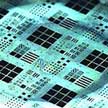 Perovskite materials have attracted great attention in the fields of optoelectronics due to their significant optoelectronic properties. So far, the applications of perovskite thin-films have been limited to solar cells because the required high-definition patterning for optoelectronic devices hadn't been achieved yet. Now, though, researchers in Korea have realized a high-resolution spin-on-patterning (SoP) process for the fabrication of optoelectronic devices arrays such as image sensors.
Perovskite materials have attracted great attention in the fields of optoelectronics due to their significant optoelectronic properties. So far, the applications of perovskite thin-films have been limited to solar cells because the required high-definition patterning for optoelectronic devices hadn't been achieved yet. Now, though, researchers in Korea have realized a high-resolution spin-on-patterning (SoP) process for the fabrication of optoelectronic devices arrays such as image sensors.
Sep 5th, 2017
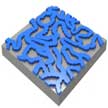 Quasi-periodic and random patterns in nature can exhibit extraordinary functions, such as iridescent color in bird wings, strong adhesion in gecko feet, and water repellency from lotus leaves. However, nature-inspired 3D nanostructures can be prohibitively expensive to make using modern nanoscale manufacturing processes. In new work, researchers a design approach integrated with scalable nanomanufacturing that can rapidly optimize and fabricate quasi-random photonic nanostructures.
Quasi-periodic and random patterns in nature can exhibit extraordinary functions, such as iridescent color in bird wings, strong adhesion in gecko feet, and water repellency from lotus leaves. However, nature-inspired 3D nanostructures can be prohibitively expensive to make using modern nanoscale manufacturing processes. In new work, researchers a design approach integrated with scalable nanomanufacturing that can rapidly optimize and fabricate quasi-random photonic nanostructures.
Aug 1st, 2017
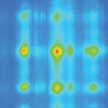 Multi-modal lasers can emit at different wavelengths simultaneously and are important for applications ranging from multiplexed signal processing to multi-color biomedical imaging. To achieve multi-wavelength capabilities, however, the single-color lasers need to be operated as an array of lasers, which dramatically increases the unit cost and precludes their integration with compact photonic devices. Researchers now have demonstrated that multi-modal lasing with control over the different colors can be achieved in a single device.
Multi-modal lasers can emit at different wavelengths simultaneously and are important for applications ranging from multiplexed signal processing to multi-color biomedical imaging. To achieve multi-wavelength capabilities, however, the single-color lasers need to be operated as an array of lasers, which dramatically increases the unit cost and precludes their integration with compact photonic devices. Researchers now have demonstrated that multi-modal lasing with control over the different colors can be achieved in a single device.
Jul 10th, 2017
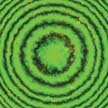 Researchers demonstrate a novel mechansim for the realization of an optical waveguide. This opens the possibility to realize a waveguide without any modulation of the refractive index. The optical delay necessary for the beam confinement is not achieved by a local modulation of the speed of light, but through an exotic effect called 'geometric phase'. Geometric phase is a temporal delay associated with changes in the propagation of light polarization, the latter corresponding roughly to the oscillation direction of the electromagnetic field.
Researchers demonstrate a novel mechansim for the realization of an optical waveguide. This opens the possibility to realize a waveguide without any modulation of the refractive index. The optical delay necessary for the beam confinement is not achieved by a local modulation of the speed of light, but through an exotic effect called 'geometric phase'. Geometric phase is a temporal delay associated with changes in the propagation of light polarization, the latter corresponding roughly to the oscillation direction of the electromagnetic field.
Mar 14th, 2017
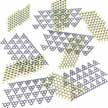 Photodetectors with a spectral response from the ultraviolet (UV) to visible light have significant importance in modern industrial and scientific applications such as imaging, communication, environmental monitoring and day and nighttime surveillance. Compared to other materials, the photo-current conversions of two-dimensional transition metal dichalcogenides such as MoS2 nanosheets are impressive, making them great candidates for next-generation visible light photodetectors. Researchers have now developed a facile and low-cost solution processing strategy to fabricate mechanically flexible 2D organic-inorganic hybrid thin-film photodetectors on a conventional filter paper.
Photodetectors with a spectral response from the ultraviolet (UV) to visible light have significant importance in modern industrial and scientific applications such as imaging, communication, environmental monitoring and day and nighttime surveillance. Compared to other materials, the photo-current conversions of two-dimensional transition metal dichalcogenides such as MoS2 nanosheets are impressive, making them great candidates for next-generation visible light photodetectors. Researchers have now developed a facile and low-cost solution processing strategy to fabricate mechanically flexible 2D organic-inorganic hybrid thin-film photodetectors on a conventional filter paper.
Mar 9th, 2017
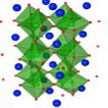 Complex oxide perovskite have been intensively researched for over half a century for their intriguing high temperature superconductivity, thermoelectric, ferroelectricity, colossal magnetoresistance. However, their large band gaps limit their interaction with visible photons. In new work, researchers propose transition metal perovskite chalcogenides (TMPCs) as a new class of versatile semiconductors for optoelectronic applications.
Complex oxide perovskite have been intensively researched for over half a century for their intriguing high temperature superconductivity, thermoelectric, ferroelectricity, colossal magnetoresistance. However, their large band gaps limit their interaction with visible photons. In new work, researchers propose transition metal perovskite chalcogenides (TMPCs) as a new class of versatile semiconductors for optoelectronic applications.
Feb 28th, 2017
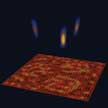 Compact optical components are crucial to realize miniaturized optical systems and integrated optoelectronic devices. Plasmonic metasurfaces - structured materials in 2D with rationally designed, subwavelength-scale building blocks - have drawn great interest because they can control light based on subwavelength structures. These planar devices are attractive for applications ranging from high resolution imaging to 3D holography. New work describes the design and prototyping of single-crystalline TiN plasmonic metasurfaces based on subwavelength hole arrays.
Compact optical components are crucial to realize miniaturized optical systems and integrated optoelectronic devices. Plasmonic metasurfaces - structured materials in 2D with rationally designed, subwavelength-scale building blocks - have drawn great interest because they can control light based on subwavelength structures. These planar devices are attractive for applications ranging from high resolution imaging to 3D holography. New work describes the design and prototyping of single-crystalline TiN plasmonic metasurfaces based on subwavelength hole arrays.
Jan 27th, 2017
 Moderate exposure to sunlight has significant health benefits, however, exposure to ultraviolet (UV) radiation also is a major risk factor for most skin cancers. That means that, while moderate exposure to sunlight is recommended, there is a fine line to walk between beneficial and harmful amounts of UV exposure. To take the guesswork out of assessing the exposure to damaging UV rays, several wearable consumer UV sensors have already hit the market. Researchers have now proposed a simple and low-cost stick-on nanoplasmonic patch made of optically active silver nanoparticles embedded in a film of nanopaper. The patch changes color once it has been exposed to a certain amount of UV light.
Moderate exposure to sunlight has significant health benefits, however, exposure to ultraviolet (UV) radiation also is a major risk factor for most skin cancers. That means that, while moderate exposure to sunlight is recommended, there is a fine line to walk between beneficial and harmful amounts of UV exposure. To take the guesswork out of assessing the exposure to damaging UV rays, several wearable consumer UV sensors have already hit the market. Researchers have now proposed a simple and low-cost stick-on nanoplasmonic patch made of optically active silver nanoparticles embedded in a film of nanopaper. The patch changes color once it has been exposed to a certain amount of UV light.
 Subscribe to our Nanotechnology Spotlight feed
Subscribe to our Nanotechnology Spotlight feed





